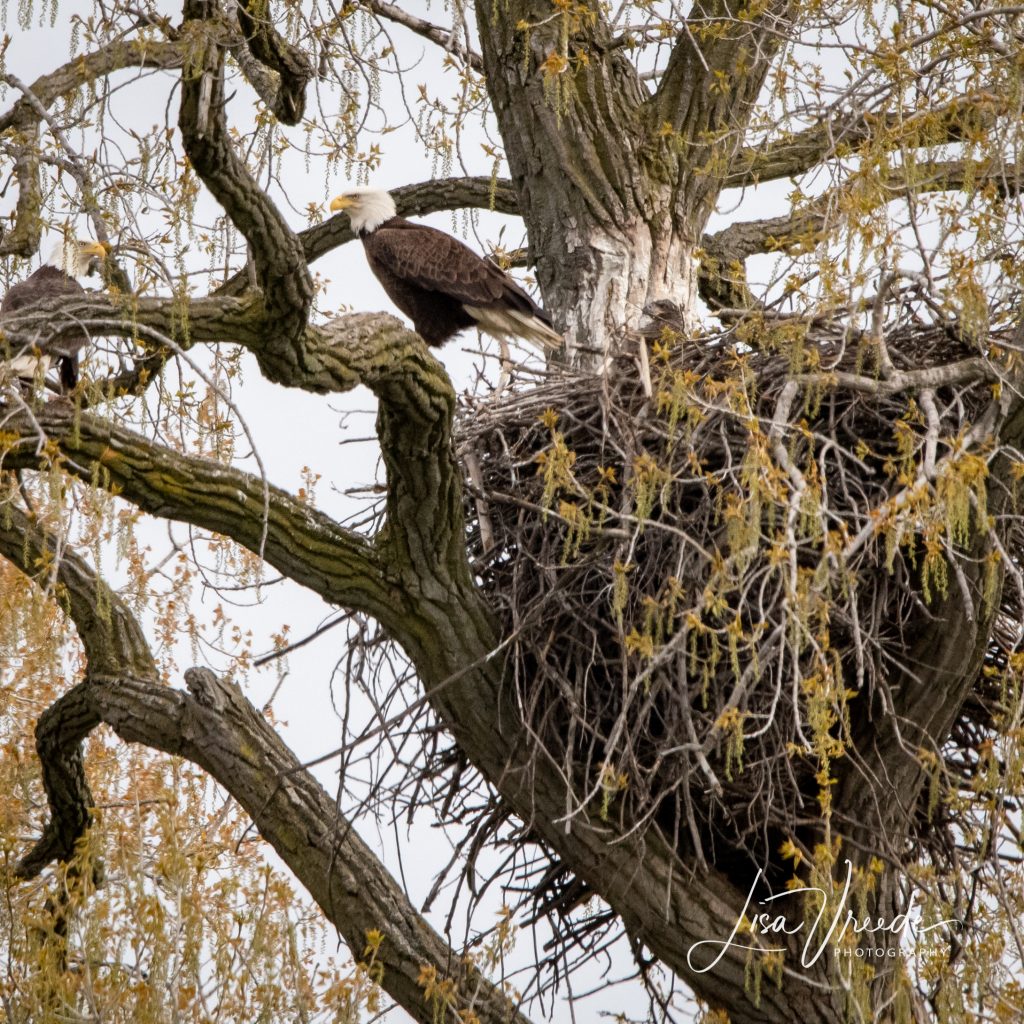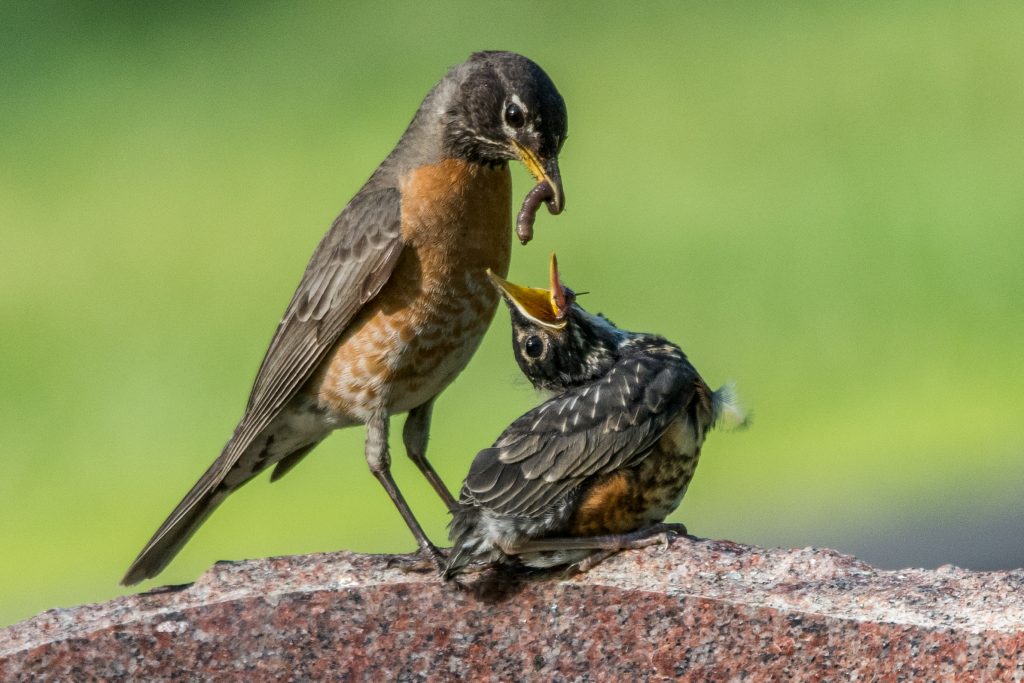Mother Birds
Happy Mother’s Day to all of the Moms out there. Let’s take a moment to celebrate some of our local Mother birds.

Sitting on eggs for over a month of incubation, the Bald Eagle shows what parental dedication is all about. Our local pair at the Country Club of Detroit fly to the Lake to catch fish for the youngsters, and have been witnessed bringing their catches back to the nest to feed the fledglings. This large raptor attends to her young for the entire summer as it will take this long for the young ones to learn to fly and develop hunting skills. I was privileged to listen to the details of the nest building from a customer whose house faces the Country Club. In a lot next to hers, the Bald Eagle would come down and take large branches off the ground to use as the base for this massive nest. The inside is lined with smaller twigs, grasses and moss.

Many other Mother Birds, such as the familiar American Robin, sit on eggs for only two weeks, and it is the female alone who does the incubating. The young leave the nest after another two weeks, during which time the male helps with feeding. However, Robins start breeding very early as many of you are already witnessing. They may have two or three broods of young within the season, making for a summer full of parenting.

Oriole mothers create a master of a nest, a woven pendulous hanging “sock-like” nest. The nest may take ten to fourteen days to create, placed close to the ends of branches so that it is unlikely that a predator is able to take the eggs or young. Think about the fact that the first-year females have no blueprint to follow when weaving this nest. As she builds, she tangles the nesting material with her beak and pushes it into shape much like felted wool. I once watched an oriole come to my yard and land on the ground at the base of the coneflowers that I had left standing all winter. She clipped at the bottom of the plant and then pulled backward, creating a long strand of material with which to work into her nest. That one moment changed the way I felt about “cleaning up” my yard in the fall. Although I haven’t witnessed a similar moment again, I imagine that it is happening when I am not watching.

Hummingbird moms are solely responsible for creating their nest, incubating and feeding their young. Many times, they will start creating a second nest while the first brood are still being fed. That’s a lot of work, especially considering that they need to find spider webs to hold their woven nest together and onto the branch. The web allows the nest to stretch as the young get older. The spider webs are also used as the sticky substance that holds the moss and lichens into place on the outside of the nest, acting as camouflage. Do you have all of these nesting materials in your yard for the hummingbirds to use? Leave the webs and don’t spray for spiders or other insects. In fact, insects comprise half of a hummingbirds’ diet and she feeds her young this half nectar/half insect diet. If you don’t have mosses in your yard naturally, consider a small container of them to provide the nesting material so many birds can use.
Enjoy watching the hard working Mother Birds in your yard.
